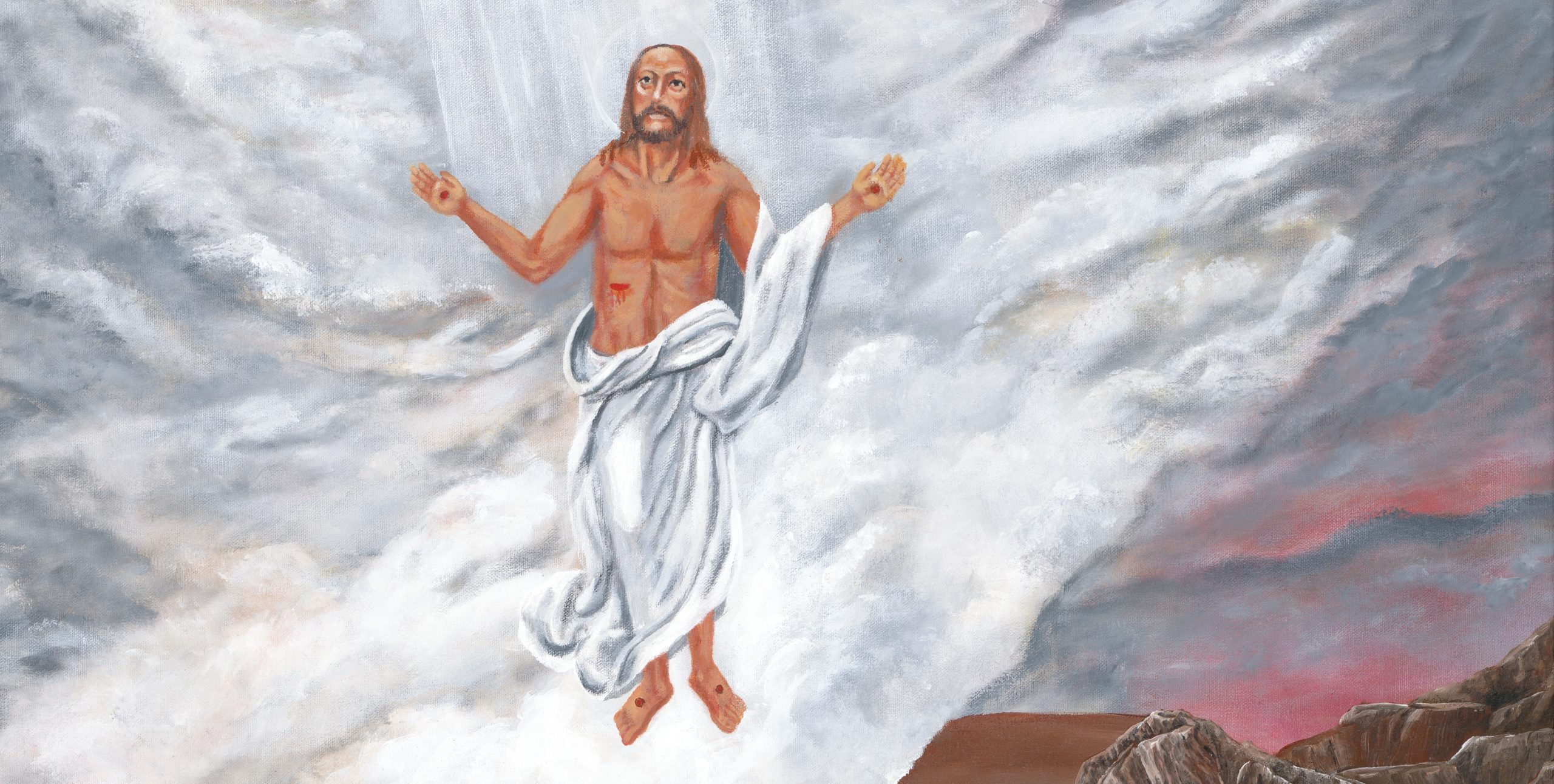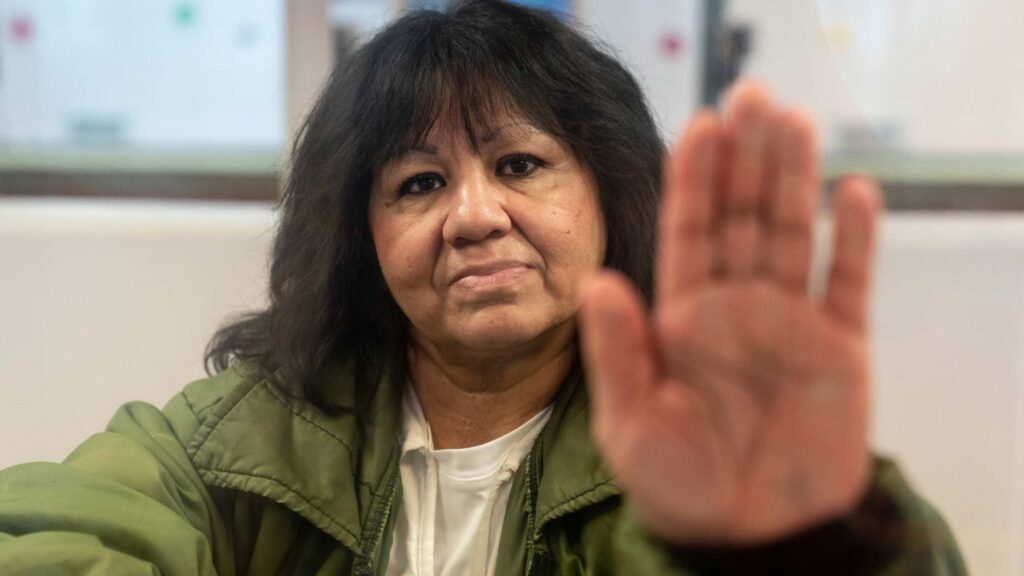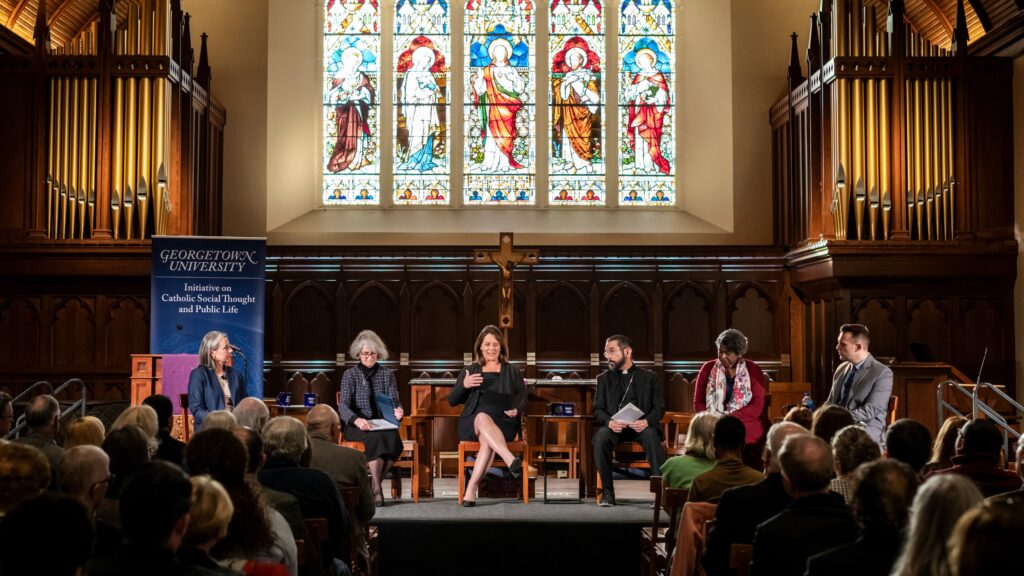The Stations of the Cross: An Art Project

In Lent 2019, a group of death row inmates at Tennessee’s Riverbend Maximum Security Prison painted a vibrant depiction of the Stations of the Cross (below) and the Resurrection (above) on a six-foot long piece of canvas. The project, which was facilitated by members of the prison ministry program in the Diocese of Nashville, took more than two months to complete.
Since then, the painting has moved outside the prison’s walls, being transported from parish to parish and sparking powerful conversations about our Gospel call to encounter those in prison.
The statement below was written by Derrick Quintero, one of the artists behind the project.
“This piece of art is a commentary on the continuing battle for our collective moral worldview. It is a collaborative effort with several of my fellow artists, all of whom reside on Tennessee’s death row.
Not all are Christians, or even religious. Several chose to be anonymous.
I asked my fellow community members to help me create this project to begin a conversation about what justice looks like.
When Jesus was executed, justice looked different than it does today. However, justice today has some of the same components as it did back then: the guilty, as are the innocent, are subjected to this state-sanctioned process. As we understand it, state-sanctioned, means that “we the people” — collectively speaking — uphold the system of justice. So, based upon our support, this system of justice reflects our community’s sense of morals and values.
One of the biggest issues that my sense of the “Christian” world has is dealing with the fact that Jesus was not a caucasian. This is also true here on death row, a microcosm of the larger “free-world” community. So we decided not to limit one another’s understanding of Jesus’ death or appearance.
During the two months it took to complete this project, we accepted criticism and positive critique from other non-participating community members. Some positive critique from other non-participating community members were prisoners. Some were religious and secular volunteers.
Some were correctional officers. It turned into a true community project.
I do not know how many opinions we changed inside during this project, but the dialogue is a prerequisite for the community model we prisoners have created on this death row, based on the concept of reciprocal education and community healing (“REACH Coalition” and “Men of Hope”). We regularly engage visiting groups to death row on what justice looks like.








